Capitalist chaos: a major survey of Jason Rhoades takes Los Angeles by storm
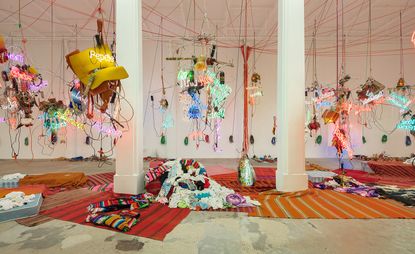
Not many artists can fill 28,000 square feet of gallery space with just six works.
This week the late great Jason Rhoades has done that, with his largest ever exhibition in his hometown of Los Angeles, recently opened at Hauser Wirth & Schimmel. A survey of this kind on Rhoades – who died in 2006, aged 41 – has been in order in LA for some time.

Detail of ’My Madinah. In pursuit of my ermitage...’, 2004
Rhoades was a graduate of UCLA, where his professors included Paul McCarthy and Chris Burden, and he continued to live and work in the city his whole life; but it’s only now that curator Paul Schimmel has traced the trajectory of Rhoades’ career in its Californian context. The six installations span two decades, and have been carefully selected to summarise the artist’s interests and the subjects that preoccupied his practice: sex, politics, religion, art, race and gender.
The nineties works – Swedish Erotic and Fiero Parts, (1994), My Brother/Brancuzi, (1995), The Creation Myth (1998) – give a strong overview of Rhoades experimentation from early on, and his innovative way of visualising the new, technology and consumer driven, networked way of thinking. His mass assemblages of this era are materially synaptic, perhaps most in My Brother/Brancuzi, a work created for the Whitney Biennial in 2005, that leaps from his brother’s suburban bedroom to modernism through piles and piles of stuff.
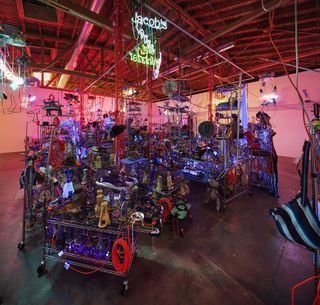
The Black Pussy... and the Pagan Idol Workshop’, 2005
The later works, right up to his last – Tijuananatanjierchandelier (2006) – tug you towards another issue: the search for the ‘ultimate pussy word’. Of course, behind the puerile pursuit in neon lights, Rhoades points to the way language and culture, in a transnational era, condition our thoughts about gender and sexuality.
There is also comfort in Rhoades’ capitalist chaos: the irresistible warmth and light that emanates from his materials and embraces you. In their unabashed, at times brash, maximalism, unapologetic in their physical scale, Rhoades didn’t see any of his works as complete — but in this exhibition, they take you on a journey.
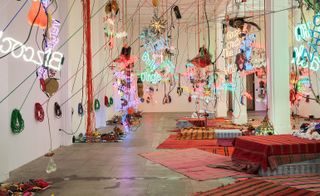
Tijuanatanjierchandelier, 2006, is the most recent work on show, and raises questions about consumerism in relation to disparate cultures and classes by exploring tourism in analogous third world border towns: Tijuana, Mexico and Tangier, Morocco
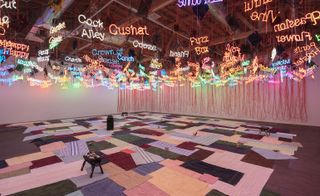
My Madinah. In pursuit of my ermitage..., 2004, was designed as a bipolar transmission and reception station
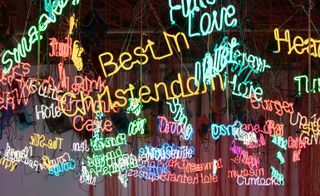
Detail of My Madinah. In pursuit of my ermitage..., 2004
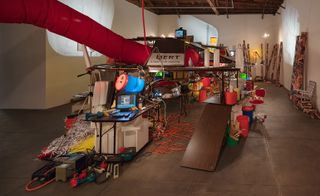
In The Creation Myth, 1998, Rhoades sought to understand why, how, and what humans create by exploring creationist and evolutionist theories in tandem
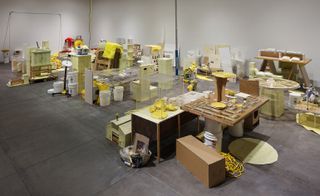
Swedish Erotica and Fiero Parts, 1994, is Rhoades' only work to specifically reference the urban and cultural landscape of his native LA. His deep fascination with Ikea and the act of buying inspired him to create modular set-ups of 'furniture' for viewers to explore
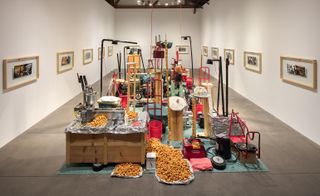
My Brother / Brancuzi was originally created for the 1995 Whitney Biennial, Rhoades' first national museum exhibition. Its setting and history inspired the artist to explore the values of modernism
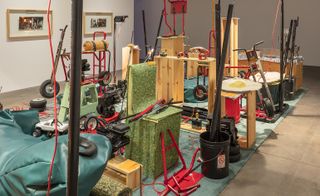
In My Brother / Brancuzi, 1995, Rhoades juxtaposes his brother's suburban bedroom with the famous studio fo Constantin Brancusi
INFORMATION
‘Jason Rhoades: Installations, 1994–2006’ is on view until 21 May. For more information visit the Hauser & Wirth website
ADDRESS
Hauser Wirth & Schimmel
901 E 3rd St
Los Angeles, CA 90013
Wallpaper* Newsletter
Receive our daily digest of inspiration, escapism and design stories from around the world direct to your inbox
Charlotte Jansen is a journalist and the author of two books on photography, Girl on Girl (2017) and Photography Now (2021). She is commissioning editor at Elephant magazine and has written on contemporary art and culture for The Guardian, the Financial Times, ELLE, the British Journal of Photography, Frieze and Artsy. Jansen is also presenter of Dior Talks podcast series, The Female Gaze.
-
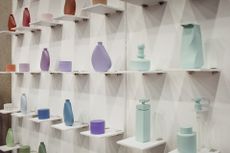 Cosmoprof 2024: the beauty innovations discovered by Wallpaper*
Cosmoprof 2024: the beauty innovations discovered by Wallpaper*Cosmoprof invited Wallpaper* to discover the latest innovations in beauty, from tech devices to natural skincare
By Hannah Tindle Published
-
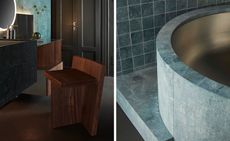 ‘The Small Hours’ bathroom collection by Patricia Urquiola for Salvatori is an ode to having time for yourself
‘The Small Hours’ bathroom collection by Patricia Urquiola for Salvatori is an ode to having time for yourselfPatricia Urquiola's new bathroom collection pushes Salvatori's formal aesthetic with an unprecedented combination of stone and steel
By Cristina Kiran Piotti Published
-
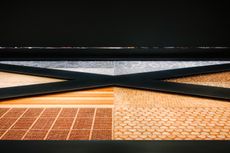 Hermès celebrates the materiality of earth in theatrical Milan Design Week 2024 spectacle
Hermès celebrates the materiality of earth in theatrical Milan Design Week 2024 spectacleThe Topography of Material is Hermès Milan Design Week 2024 display at La Pelota, focused on an installation exploring the materiality of earth and celebrating new and archival objects
By Rosa Bertoli Published
-
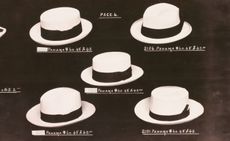 The Met’s ‘The Real Thing: Unpacking Product Photography’ dissects the avant-garde in early advertising
The Met’s ‘The Real Thing: Unpacking Product Photography’ dissects the avant-garde in early advertisingA new exhibition at The Metropolitan Museum of Art in New York explores the role of product photography and advertising in shaping the visual language of modernism
By Zoe Whitfield Published
-
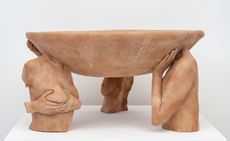 Who is the future of British art? Hauser & Wirth Somerset finds out
Who is the future of British art? Hauser & Wirth Somerset finds out‘Present Tense’ at Hauser & Wirth Somerset showcases some of Britain’s most exciting emerging talents with a group show of 23 artists
By Mary Cleary Published
-
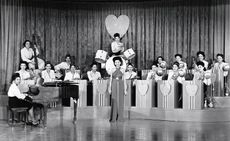 Detroit Institute of Arts celebrates Black cinema
Detroit Institute of Arts celebrates Black cinema‘Regeneration: Black Cinema 1898-1971’ at the Detroit Institute of Arts (DIA) brings lost or forgotten films, filmmakers and performers to a contemporary audience
By Anne Soward Published
-
 BLUM marks 30 years of Japanese contemporary art in America
BLUM marks 30 years of Japanese contemporary art in AmericaBLUM will take ‘Thirty Years: Written with a Splash of Blood’ to its New York space in September 2024, continuing its celebration of Japanese contemporary art in America
By Timothy Anscombe-Bell Published
-
 Todd Gray’s sculptural photography collages defy dimension, linearity and narrative
Todd Gray’s sculptural photography collages defy dimension, linearity and narrativeIn Todd Gray’s New York exhibition, he revisits his 40-year archive, fragmented into elaborated frames that open doors for new readings
By Osman Can Yerebakan Published
-
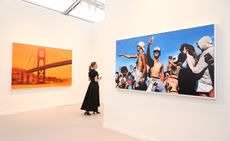 Frieze LA 2024 guide: the art, gossip and buzz
Frieze LA 2024 guide: the art, gossip and buzzOur Frieze LA 2024 guide includes everything you need to know and see in and around the fair
By Renée Reizman Published
-
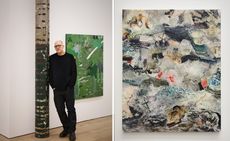 New York artist Christopher Astley showcases an alternative natural world
New York artist Christopher Astley showcases an alternative natural worldAt Martos Gallery in New York, Christopher Astley’s paintings evoke an alternative natural world and the chaos of warfare (until 16 March 2024)
By Tianna Williams Published
-
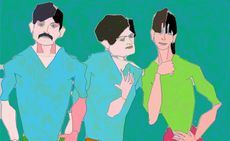 The Whitney plots Harold Cohen’s artistic AI adventures
The Whitney plots Harold Cohen’s artistic AI adventures‘Harold Cohen: AARON’, at the Whitney Museum of American Art celebrates the artist’s software – the earliest AI program for artmaking – as an artwork in its own right
By Hannah Silver Published